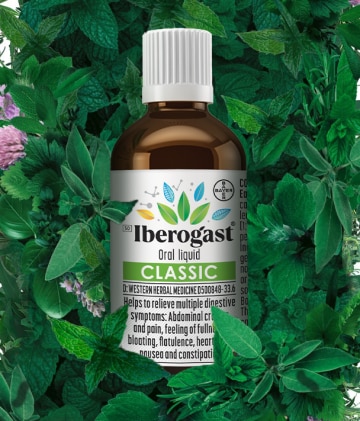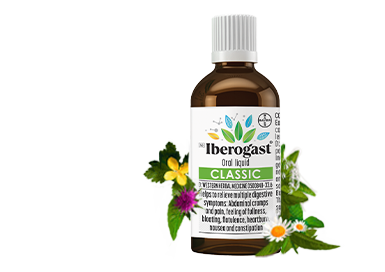Celandine (Chelidonium majus): The herbal ingredient anti-spasmodic
The healing power of celandine has been known since the Antiquity. In Europe, the plant was known primarily as a remedy for plantar warts (verucca) - and is still used today in various preparations for this purpose. In contrast, the plant was used in traditional Chinese medicine to improve blood circulation. Celandine was also known as Devil’s Milk, due to its acrid milky juice.
Today Chelidonium majus is a component of combinational herbals as its ingredients were shown to relieve spasmodic complaints in the gastrointestinal tract.
In general, the provision of celandine in medicinal preparations is decreasing. In Europe, there are therefore only a few celandine-containing medicines such as Iberogast®.
The effect of celandine on the gastrointestinal tract
In Iberogast®, celandine mainly contributes to the activation of the muscle tone in the antrum of the stomach. Its components bind to serotonin receptors and show spasmolytic effects in the intestine.
Furthermore, the extracts of celandine in Iberogast®, like all the herbs it contains, can fend off free radicals.
Most of the anti-spasmodic properties of celandine are attributed to the contained alkaloids, which promote digestion, relieve cramps and have anti-inflammatory effects. Furthermore, alkaloids are considered to be antiviral, antimicrobial and anti-tumorous. Additionally, analgesic, choleretic and immunomodulatory properties have been described.
Alkaloids are nitrogen-containing compounds that protect plants from diseases and, due to their mostly bitter taste, from predators. They are also found in tomatoes, eggplants, goji berries and various teas.
The recommended daily dose of Iberogast® contains a significantly low (0.3 milligrams) amount of these substances.
At a glance: This is how celandine works in Iberogast®
The following table shows the different active contributions of celandine in Iberogast®:
| Active benefits of celandine in the frame of irritable stomach | |
| Activation of the musculature in the lower stomach | |
| Relaxation of the musculature in the upper stomach | |
| Anti-inflammatory | |
| Regulation of acid production | |
| Protection of the mucosa |
Legend:
| Light Impact | Medium Impact |
High Impact |

Interesting facts about celandine
Did you know, that:
- The Latin name of celandine goes back to the words "coeli donum" which means heavenly offering?
-
"Chelidonium", the botanical name of celandine, is derived from the Greek word "chelidon" for swallow? Probably because the celandine begins to flower with the arrival of the swallows after winter. In some old tradition it says that the swallows heal their blind young with the juice of the celandine.
-
The herb originally comes from Central Europe as well as from Asia? Today, celandine is found throughout Europe. Settlers also brought it to North America.
-
Celandine grows about 50 centimeters high and prefers residential areas?
-
Chelidonium majus blooms bright yellow from the end of April to September?
-
the plant is clearly identified by the strong smelling, orange-yellow milk juice that comes out of the plant when it is cut off?
-
It belongs to the family of papaveraceae and is related to the poppy?
Get an overview of the medicinal herbs contained in Iberogast®!









